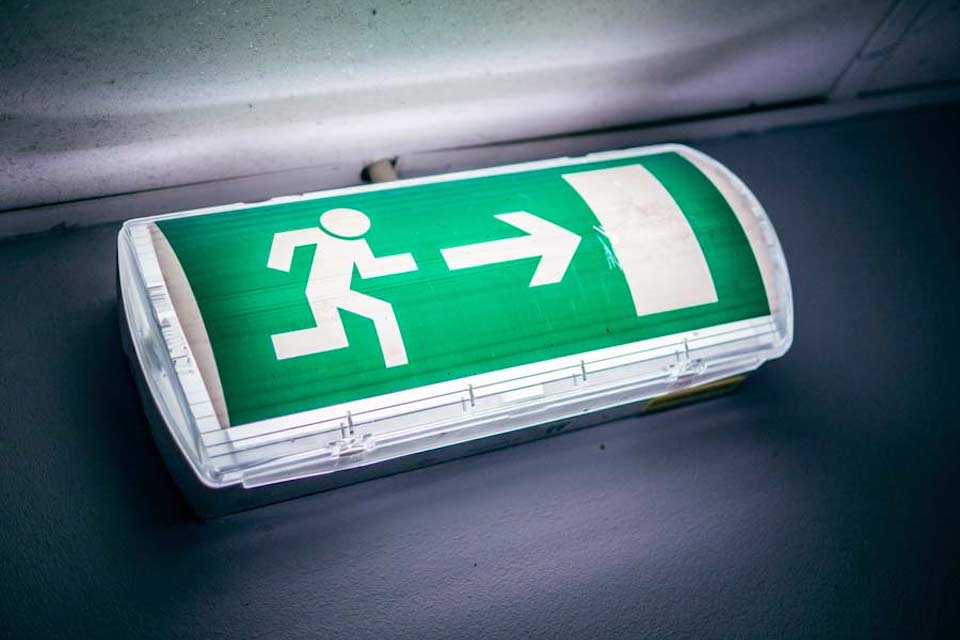Emergency lighting is lighting that comes on when there’s a mains supply failure from a fire or a power cut, for example. It’s a safety measure to safeguard the occupants of a building and allow them to see their way to exit the building safely.
Under the Regulatory Reform (Fire Safety) Order 2005, it’s a legal requirement for businesses or landlords of houses of multiple occupation to install emergency lighting in their property.
If you require emergency lighting, here’s a summary of the different types and their application.
What types of emergency lighting are there?
There are three different types of emergency lighting:
- Escape route lighting illuminates routes to fire escapes and emergency exits to assist occupants in leaving the building.
- Open-area emergency lighting is used in large public buildings such as shopping malls and theatres. Also referred to as “anti-panic” lighting, its purpose is to prevent panic by assisting occupants who might not be familiar with a building to find the exits.
- High-risk task area lighting is necessary where workers might need to switch off equipment (machinery or cookers, for example) or perform shut-down procedures before moving to safety.
Standby lighting is a fourth type of emergency lighting, although it isn’t legally required. This type of illumination kicks in when the power goes out and is usually powered by a diesel generator.
Maintained or non-maintained emergency lighting?
Emergency lighting products fall into two categories – maintained and non-maintained.
Maintained emergency lights are typically used in venues that host large groups, such as cinemas, theatres and clubs. They’re on all the time but dimmed when the premises are occupied, and if the power fails, switch to battery-powered emergency output.
Non-maintained lights only come on when there’s a power cut.
How are emergency lighting systems powered?
You can power emergency lighting systems in one of two ways:
- Self-contained or single-point power source – the emergency light contains its own power supply in the form of a battery.
- Central battery source – the power to each emergency light is supplied from a central battery source within the premises via cabling.
Self-contained or single-point power source lights are usually cheaper and faster to install. However, they have limited battery life and can be affected by local conditions, such as humidity.
Central battery sources are more expensive to install, but they are straightforward to test and maintain once in.
As you can see, several factors should be considered when installing emergency lighting. If you’re unsure what’s appropriate for your business, we can help. We design and install new emergency lighting systems, as well as maintain and update existing systems.
If you would like advice or a quote for emergency lighting installation, please call us on 01392 368830 or complete our contact form.

